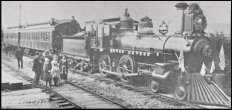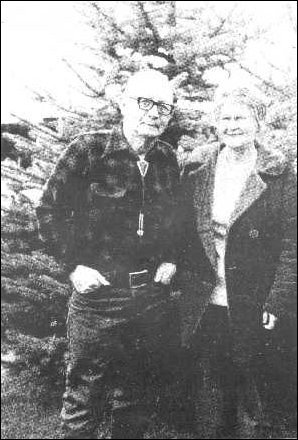Skagit River Journal
Free Resources Stories & Photos

|
Our free site remains free. How to subscribe to our separate online magazine or donate to our project |
Skagit River JournalFree Resources Stories & Photos |

|
 |
After enlisting during World War I, Bob spent a few more years in the Cascades and then gravitated back to Whatcom county, where his grandfather platted Lake Padden years before and his father was once postmaster. He then spent a few years establishing himself as a journalist in both newspapers and radio, and then Bob found his soulmate in Mildred Hunley Jenkins, who was quite an author and researcher herself, focusing on the Northwest Indian tribes, pre-white man. They spent many years hiking the North Cascades in both Washington and British Columbia. One day in 1937 he returned home to Lake Whatcom and found her knee deep in a huge map of the B.C. mainland interior, and they were soon on their way to the Chilcotin area, where they spent the second half of their lives and where he wrote another wonderful book, Chilcotin Diary. We hope that a reader will know more about the characters of old-time Rockport and about Bob's and Mildred's later years, as well as where their children Will D. Jr. (5th in the line) and Sidney Charles and their descendants are. 2004 update: Jim Harris of Marblemount recently told us that Bob lived with his son Chuck and wife Wilma near the Sauk river in his last years. He died on Oct. 17, 1997, at the Skagit Valley Convalescent Center in Sedro-Woolley at age 98. In July 2004, you will find our profile of this fine man at our website.
|
Please report any broken links or files that do not open and we will send you the correct link. Thank you. |
|
Heirloom Gardens Natural Foods at 805B Metcalf street, the original home of Oliver Hammer Oliver Hammer Clothes Shop at 817 Metcalf street in downtown Sedro-Woolley, 82 years Bus Jungquist Furniture at 829 Metcalf street in downtown Sedro-Woolley, 36 years Peace and quiet at the Alpine RV Park, just north of Marblemount on Hwy 20 Park your RV or pitch a tent by the Skagit river, just a short driver from Winthrop or Sedro-Woolley College Way Antique Mall, 1601 E. College Way, Mount Vernon, WA 98273, (360) 848-0807 Where you will find wonderful examples of Skagit county's past, seven days a week North Cascade Ford, formerly Vern Sims Ford Ranch, West Ferry street and Crossroads/Highway 20 either on the Sedro-Woolley page or directly at www.northcascadeford.com DelNagro Masonry Brick, block, stone — See our work at the new Hammer Heritage Square See our website www.4bricklayers.com 33 years experience — 15 years as a bonded, licensed contractor in the valley Free estimates, reference, member of Sedro-Woolley Chamber  (360) 856-0101 (360) 856-0101 |
|
|
|
|
|
View Our Guestbook |
|
|
Mail copies/documents to street address: Skagit River Journal, 810 Central Ave., Sedro-Woolley, WA, 98284. |